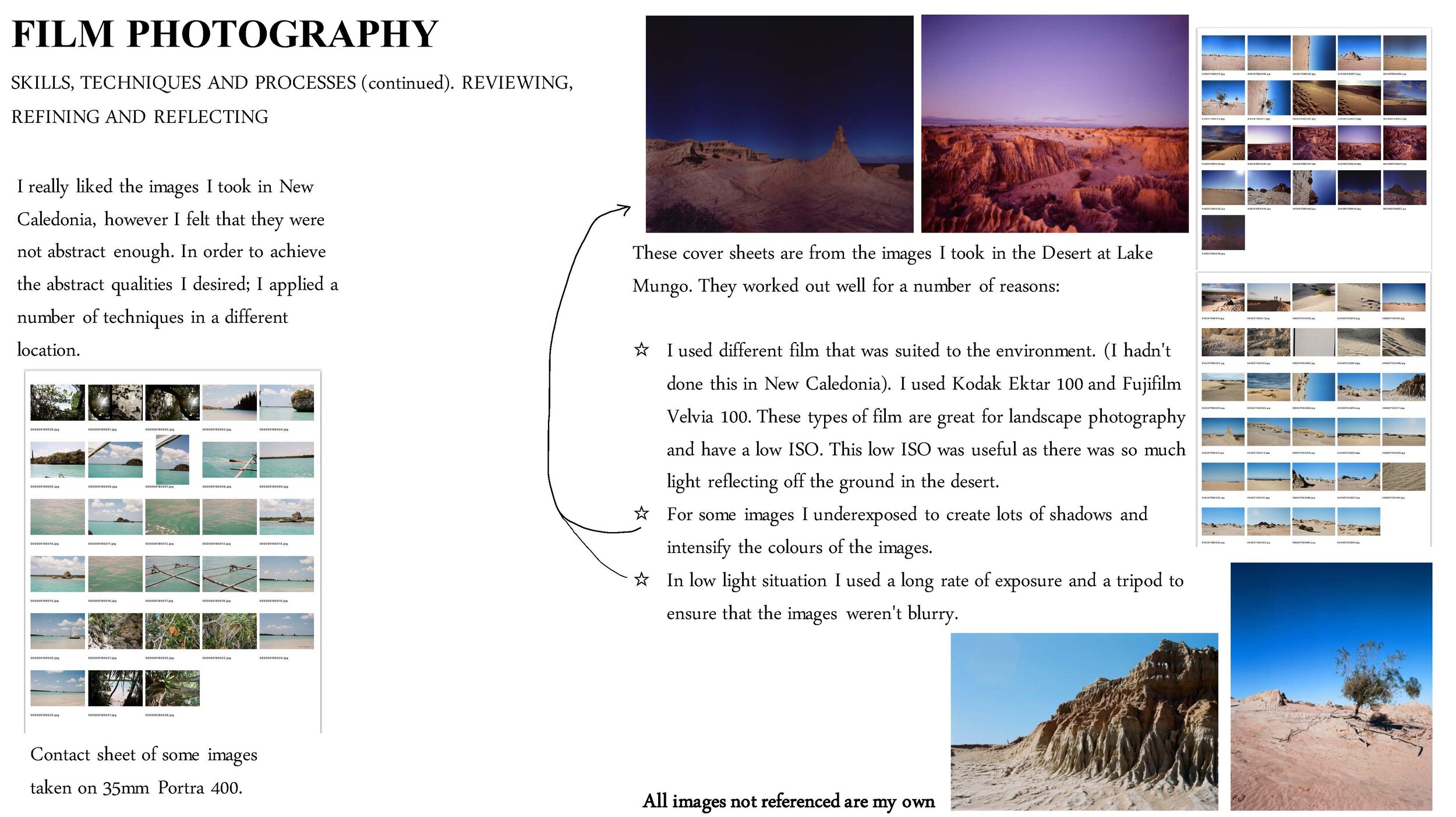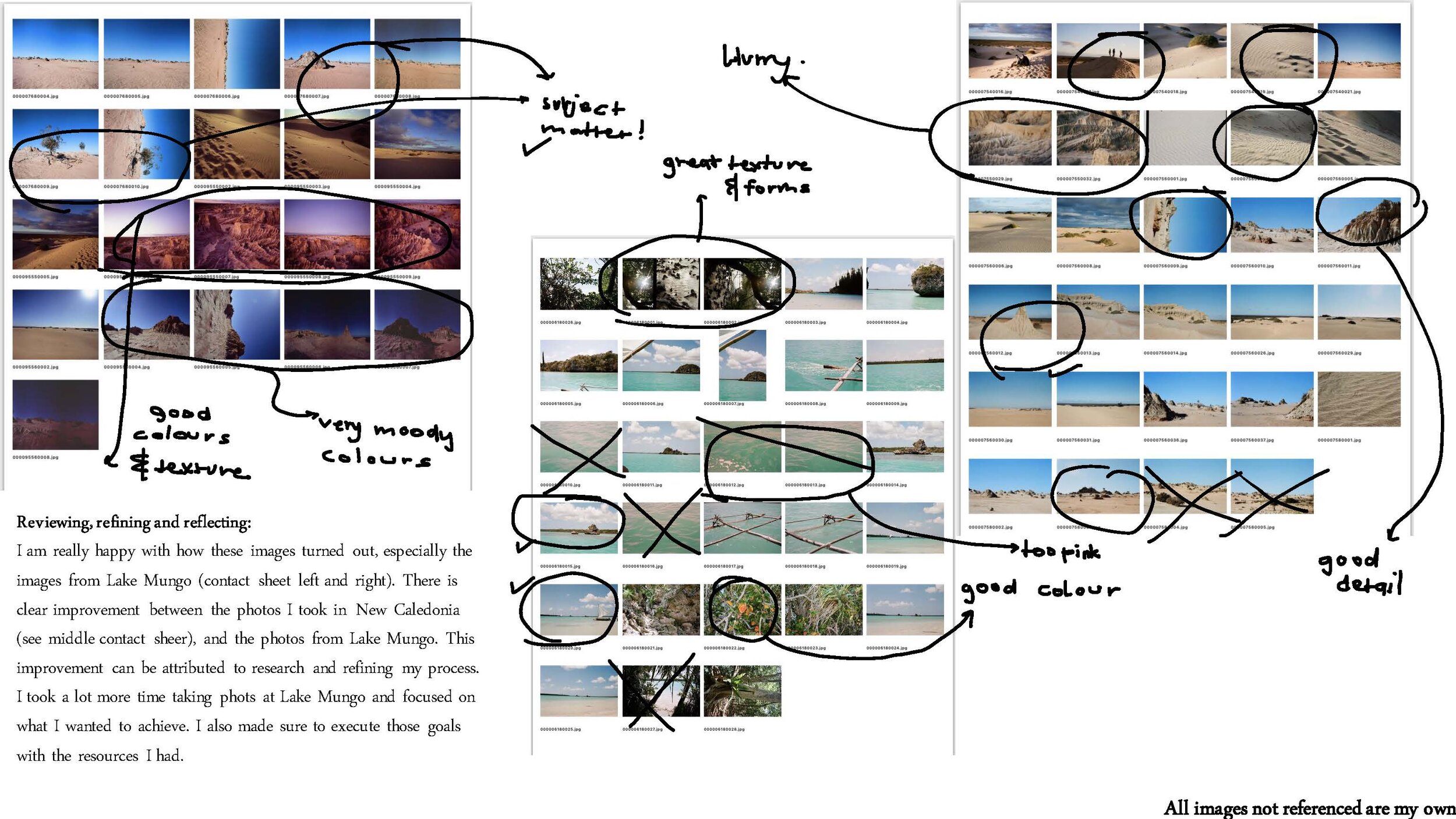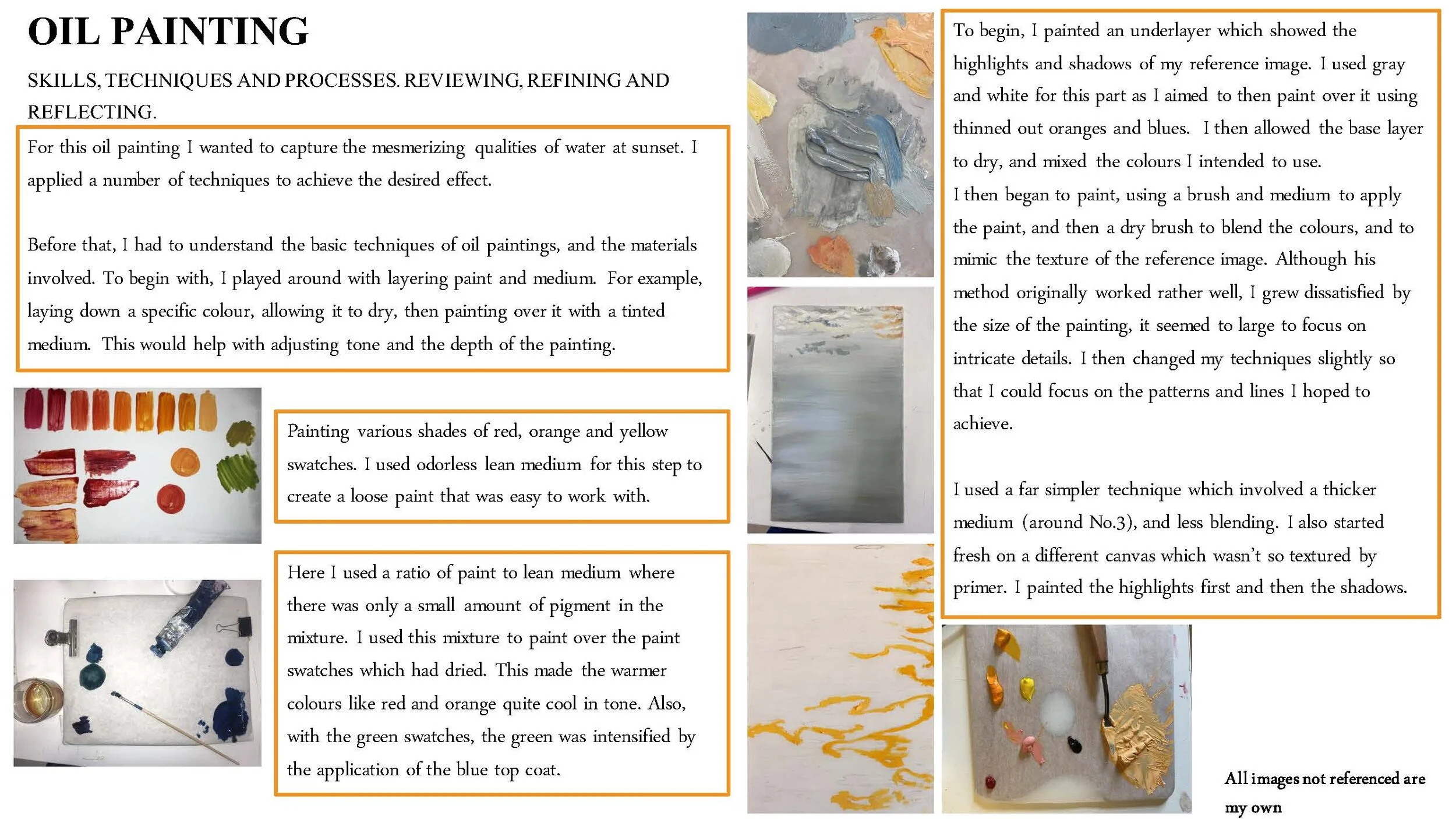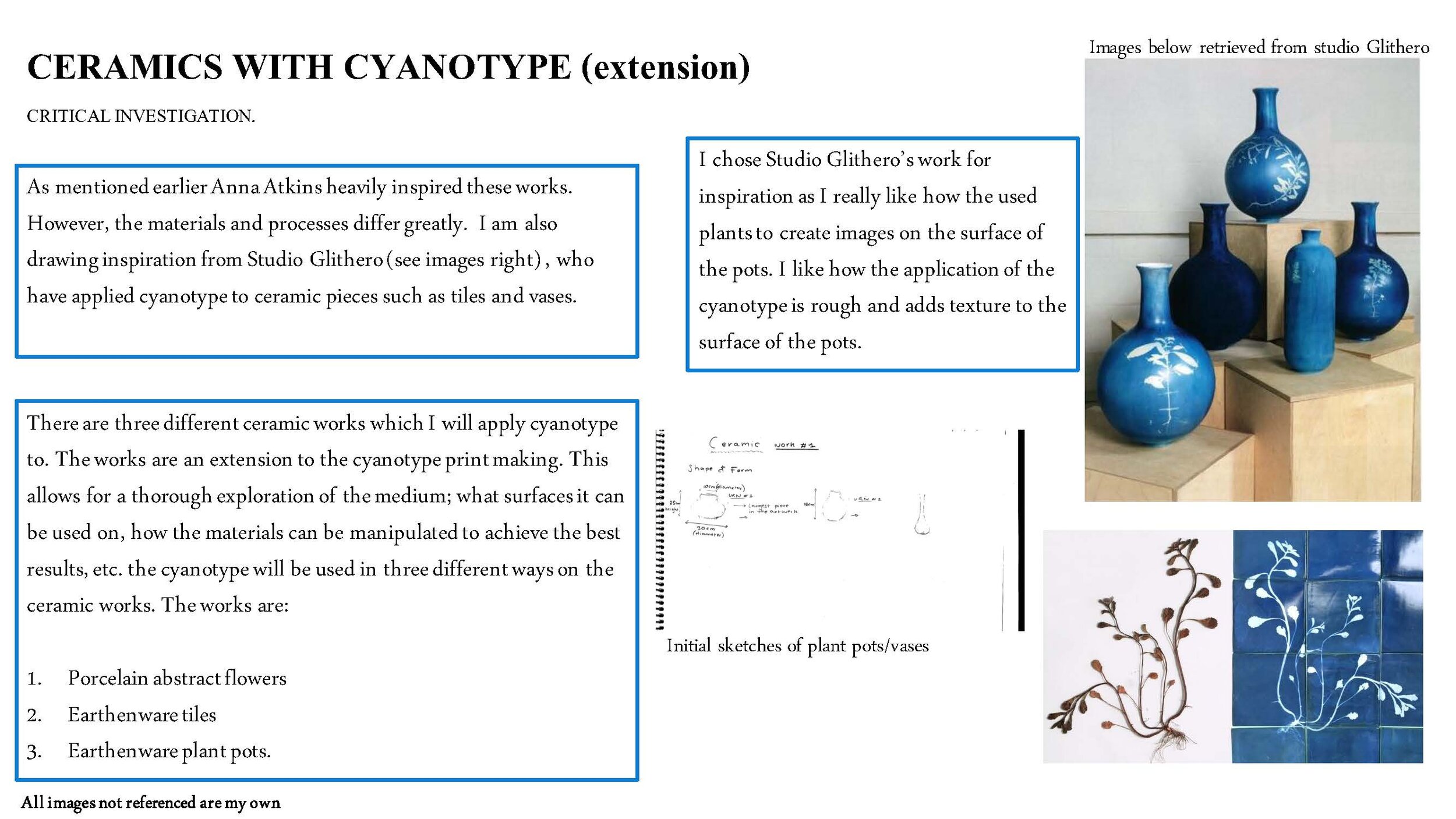ib visual arts
Aliyyah wright
Escapism is an idea that has been on the fore front of my adolescent mind for a number of years. The need to escape the often-mundane quality and tasks of everyday life has developed an appreciation of the natural world. Therefore, this exhibition will engage with the idea of escapism as well as the delicate, mesmerising and ethereal qualities of the natural world. These qualities are portrayed in a number of works, especially in ‘To the moon (and back)’ and ‘Look closer’.
A number of works depict the natural world in a rather abstracted and impressionistic manner, and this is done to emphasise the captivating and consuming sensory experience of the natural world. Impressionistic qualities are evident in ‘New Caledonian waters at sunset’, ‘Upi Bay, on an outrigger canoe’ and ‘They’re poisonous’. Each of these artworks aim to evoke feelings similar to those induced by daydreaming.
The ceramic works in this exhibition each contain natural patterns. These patterns are inspired by or derived from natural forms such as leaves, sand dunes and waves. In ‘Hoya ‘royal Hawaiian’ and Rhipsalis goebeliana’ the exteriors of the plant pots have been printed using cyanotype solution and the plants which they hold. The pots have been exposed to UV light and the shadows and patterns of the plants leave a positive image on the surface. The process and aesthetic qualities of cyanotype printing is heavily featured within this exhibition. The photochemical process derives from the very beginning of photography history. The surface photographs of a number of ceramic works have been inspired by the work of Anna Atkins, who pioneered the cyanotype process in the 1840s and 1850s, through her botanical prints. This process is also used in the two-dimensional work ‘Look closer’ to portray natural patterns other than those of the botanicals.
The colour of the cyanotype is also repeated throughout the exhibition. A number of different blue tones are used in all of the works. This creates a sense continuity between the works and extend ethereal and mesmerising qualities. There are some oranges and reds within the exhibition, but they are used sparingly to convey specific meaning within the work. For example, in ‘New Caledonian waters at sunset’ and ‘Glazed earthenware vases’ orange is used to convey the welcoming nature of the ocean, and contrast the sometimes harsh, or striking cold blues. The colours overpainted in ‘Lake Mungo sand dunes’ are used to complement and emphasise the colours and patterns of the photograph. The choice of colour in these works also emphasises or complements the ethereal qualities of the natural and abstracted subject matter.
A number of symbols are repeated throughout the exhibition. This includes water, flora and nature-based patterns. All are used to represent the irregular repetition seen in the natural world and convey delicate or intricate qualities.
The composition of a number of works are asymmetrical and this allows for a sensory escape from a busily ordered life. The works represent various forms of freedom: freedom to move, freedom to live, freedom to reflect. We need to spend time away from a ‘normal life’ in order to refresh our perception and find new inspiration.
In regard to the audience’s relationship with the artwork, it is intended that there is some sensory experience for them. The artworks are reminiscent of time of escapism and freedom. This comes with the qualities of the artworks, through pattern, colour and form. In ‘They’re poisonous’ the colours of the artwork serve as an introduction to the colour palette of the exhibition and are so intense to a point of being unnatural. This references the hallucinogenic qualities of the angel’s trumpet flowers and the literal state of escapism or delirium which the flowers cause. Contrastingly, In the domestic artworks such as ‘Coral reef’ and ‘Glazed earthenware vases’ the colour and form of the pieces serve as a far more figurative visual trigger to another time and place.
folio
selected pages




















exhibition
installation view
they’re poisonous
Watercolour painting
25cm X 15cm
This work depicts an Angel’s trumpet, a poisonous flower which causes hallucinations. The work represents a fond memory of Wendy Whitley’s garden whereby the intricacy of the flowers was rather mesmerising. This work is the opening piece for the exhibition, and this is done to introduce the colour palette of the exhibition.

Glazed earthenware vases
Series of three glazed earthenware vases
Overall dimensions 29cm X 29cm
This artwork comprises of three earthenware vases which are intended to serve as a reminder of the natural landscape’s bold colours and of a better place. The orange references the colours of a sunset, or of the Australian desert.
New Caledonian waters at sunset
Oil painting with resin
20cm 25cm
This painting depicts, as the title suggests, New Caledonian waters at sunset. The painting is encapsulated in resin, and this is done to figuratively preserve the memories I possess of the subject matter, as well as the mesmerising qualities of the sea. The colours of this piece are rather warm in tone, and this is done to award the water with welcoming qualities.
Lake Mungo sand dunes
Medium format photographic print with gouache overpainting
28.5cm X 35cm
This work was inspired by Gerhard Richter’s overpainted photographs. In order to emphasise the movement and patterns within the photograph it has been overpainted using gouache. This also turns a two-dimensional, lens-based work into a three-dimensional work. The overpainting’s colour and movement reflect the natural patterns of the sand dunes. Finally, the colour of the overpainting contrasts the colour of the natural landscape and this is done in reference to the ideas of the comparative study artwork later featured in the exhibition.

Escapism, encapsulated.
Series of two earthenware tiles with cyanotype
Overall dimensions 24cm X 24cm X 2cm
This artwork depicts two distinct representations of escapism. The first is escapism through daydreaming (see tile with abstract pattern). This tile depicts the patterns of a Zygo cactus plant in flower. The pattern is intended to be mesmerising. The second representation of escapism is more literal than the first. It is the idea of escaping the urban landscape and presiding in the natural world which is encapsulated in the second tile.
Spring, 2002
Series of four porcelain sculptures exposed with cyanotype. Overall dimensions: 21cm 29cm 15cm
This works explores the fine details of natural forms and the idea of renewal. The form of the sculptures references the intricate shapes of butterflies, and this is done to explore the intricacies of flora and fauna. The artwork is an attempt to encourage the viewer to spend more time exploring the details of the natural landscape, to appreciate the finer things.
To the moon (and back)
Series of three medium format film photographic prints. Overall dimensions 100cm
This piece focuses on the fine details of the natural world and engages with the key theme of escapism. The piece depicts the abstracted nature of ‘Walls of China’ and sand dunes, at Lake Mungo (NSW). This work references ethereal textures and forms, specifically suggestive of the moon and mars. The images aim to be all consuming or mesmerising for the viewer.
Hoya ‘royal Hawaiian’
and Rhipsalis goebeliana
Series of two earthenware plant pots with cyanotype
Overall dimensions 45cm X 30cm X 40cm
This artwork directly references the work of Anna Atkins, as plants and cyanotype solution have been used to make prints. Unlike Atkins, I have used cyanotype to print on ceramics, not paper. The work is complete with the plants in the pots. This is done as the plants which the pots hold were also used to print on the pots. The plants’ forms are persevered on the exterior of the pots, while they also continue to live within the pot.
Look closer
Series of five Cyanotype prints on watercolour paper
45cm X 80cm
This work engages with the finer details and patterns of the natural landscape. It depicts sand dunes, the ocean and other parts of the natural world which are mesmerising and delicate. The prints each highlight the movement and intricacy of its natural subject matter through colour and overexposure. The work also brings together a number of patterns which are repeated throughout the exhibition.The text is from Andromeda’s song, Weyes Blood.
Coral reef
Series of four glazed earthenware sculptures
Overall dimensions 21cm x 29cm x 20cm
This artwork comprises of four handmade earthenware sculptures. Three are candle holders while the fourth and smallest holds incense. These homewares are intended to serve as a reminder of better times, like souvenirs. We live with these objects, and the memories which they represent. The form of the works was inspired by eroded limestone, as well as coral. The works are abstracted and impressionistic, and this is done to engage with a loose, idealistic understanding of the natural world.
Textile block pattern
Repeated lino print
40cm X 40cm
This is a comparative study artwork which depicts heavily abstracted natural patterns. The work comprises of four repeated lino prints which are to be extrapolated to cover the exterior/facade of a building. The work was inspired by Frank Lloyd Wright’s textile blocks which he used on a number of houses in the 1920s. The colour of the work is to contrast its intended natural landscape. The work is to be in the Australian outback, so the red earth contrasts the deep blue of the prints.

















